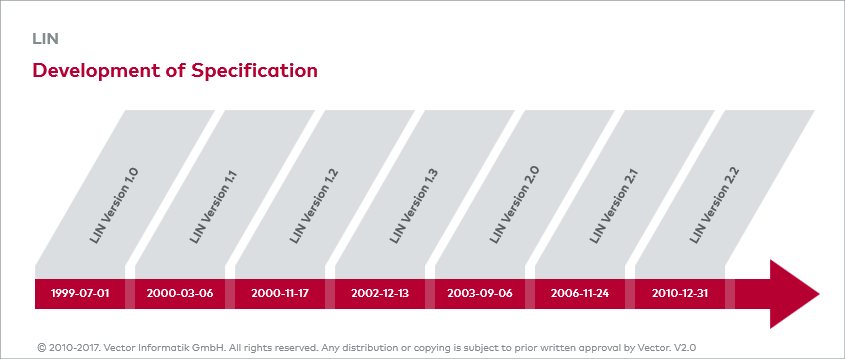Specification
LIN 1.1
The first specification originates from the year 1999. In the following year, the Consortium introduced Version 1.1 at the SAE Congress in Detroit. It consisted of the following parts: LIN Protocol Specification, LIN Configuration Language Specification, LIN Application Interface Specification.
LIN 1.2 / LIN 1.3
The specification was revised in the year 2000, and it was released in November 2000 (LIN 1.2). In the next years, the physical layer in particular was revised, and the LIN 1.3 version was released in November 2002.
LIN 2.0
After another year of revisions, Version 2.0 followed in September 2003. The overriding goal of the revision was to address trends in the automotive industry. The primary goal was to utilize the concept of off-the-shelf nodes to achieve higher part volumes. Automated design and generation of software was implemented with the goal of making the development of networks more cost-effective, faster, simpler and safer.
Off-the-Shelf
Off-the-shelf nodes are bus nodes that perform simple standard tasks, e.g. driving electric motors. They can be purchased in large quantities, essentially “off the shelf,” and can be implemented with little effort. Typical applications are controllers for seats, window lifts, mirrors, sliding sunroofs and rear hatches. The specification was also supplemented by a configuration method and a syntax for describing off-the-shelf nodes.
LIN 2.1 / LIN 2.2
Specification 2.1 has been in existence since November 2006. It now consists of eight specification parts. LIN specification 2.2 was released in December 2010, which corrects a number of minor errors and contains slightly weaker rules for bit sampling.


